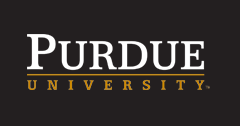Research Website
http://www.purdue.edu/discoverypark/psf/joseph.php
Keywords
Oxygen nanobubbles, ultrasound beam steering, drug delivery, imaging
Presentation Type
Event
Research Abstract
In a large number of biological and environmental applications, ultrasound (US)-powered micro- and nano-motors have attracted considerable attention. However, their applications in biological settings have been limited due to the incompatibility of metallic motors and the lack of precision guiding. Here, we demonstrate that cellulosic polymer nanobubbles (200-800nm) can be propelled, aligned, accelerated, and assembled in solution using Doppler ultrasound beam (DUB) and simultaneously imaged using low-frequency ultrasound. Results show that by utilizing Doppler ultrasound beam (DUB), nanobubbles accumulation at a pre-determined site can be enhanced. Moreover, bubbles’ trajectory and velocity can be also be manipulated. Related parameters associated with nanobubble accumulation and velocity change such as bubble size, ultrasound intensity, frequency, and beam angle were investigated using a factorial design of experiments. Frequency and intensity of the DUB were found to be significant for nanobubble accumulation whereas beam intensity was significant in changing the velocity of nanobubbles. The precise beam steering using the Doppler ultrasound and simultaneous ultrasound imaging contrast enhancement offered by nanobubbles holds considerable promise for various applications.
Session Track
Biotechnology and Chemistry
Recommended Citation
Pei Yang, Pushpak Bhandari, and Joseph Irudayaraj,
"Ultrasound-guided nanobubbles for targeted drug delivery"
(August 6, 2015).
The Summer Undergraduate Research Fellowship (SURF) Symposium.
Paper 39.
https://docs.lib.purdue.edu/surf/2015/presentations/39
Included in
Ultrasound-guided nanobubbles for targeted drug delivery
In a large number of biological and environmental applications, ultrasound (US)-powered micro- and nano-motors have attracted considerable attention. However, their applications in biological settings have been limited due to the incompatibility of metallic motors and the lack of precision guiding. Here, we demonstrate that cellulosic polymer nanobubbles (200-800nm) can be propelled, aligned, accelerated, and assembled in solution using Doppler ultrasound beam (DUB) and simultaneously imaged using low-frequency ultrasound. Results show that by utilizing Doppler ultrasound beam (DUB), nanobubbles accumulation at a pre-determined site can be enhanced. Moreover, bubbles’ trajectory and velocity can be also be manipulated. Related parameters associated with nanobubble accumulation and velocity change such as bubble size, ultrasound intensity, frequency, and beam angle were investigated using a factorial design of experiments. Frequency and intensity of the DUB were found to be significant for nanobubble accumulation whereas beam intensity was significant in changing the velocity of nanobubbles. The precise beam steering using the Doppler ultrasound and simultaneous ultrasound imaging contrast enhancement offered by nanobubbles holds considerable promise for various applications.
https://docs.lib.purdue.edu/surf/2015/presentations/39

